LLM Model Comparison: Your Comprehensive Guide
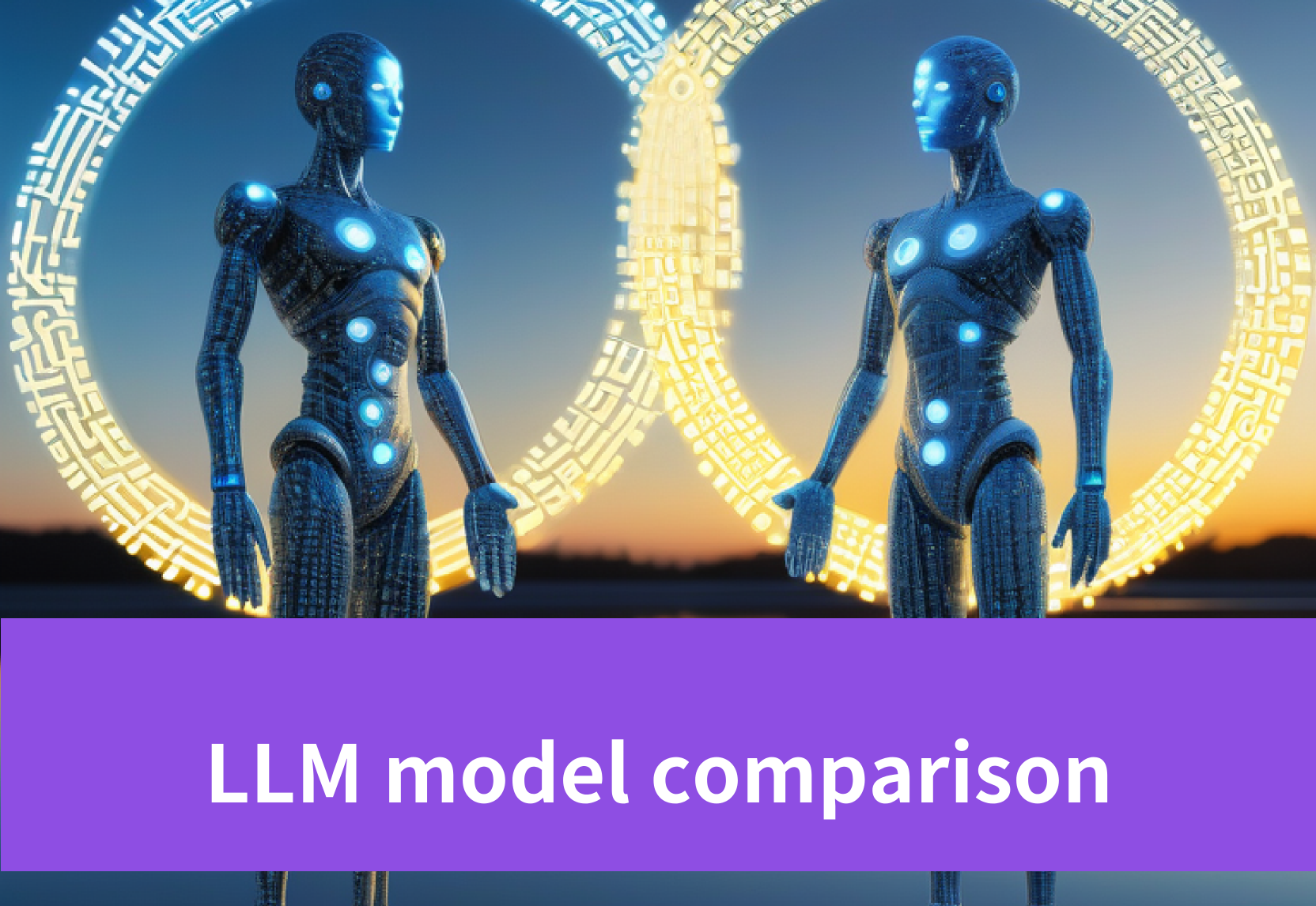
Compare LLM models with ease using our comprehensive guide on LLM model comparison. Explore features, benefits, and more on our blog.
Key Highlights
- Large language models (LLMs) have completely revolutionized the landscape of natural language processing (NLP), enabling the development of a variety of tools.
- Through extensive training on massive datasets, these LLMs grasp human language effectively.
- The realm of LLMs is dynamic, characterized by continual innovation and rapid evolution.
- Selecting the most suitable LLM involves a detailed examination of each model’s architecture, training data, and performance.
- Considering factors such as model size, computational resources, benchmarks, and potential use cases is essential.
- Novita AI, an AI API platform featuring various API services, provides the LLM API service. Besides LLM API service, developers can also test models like llama to produce faster and cheaper on a large scale with the platform.
Introduction
Big language models (LLMs) have transformed NLP, powering chatbots, article writing, sentiment analysis, and language translation tools. Understanding LLM technology is crucial for selecting the right model tailored to project needs. Tech giants like OpenAI, Google, Meta, and Anthropic drive innovation in this field. Staying updated on NLP trends is key to effectively leveraging these tools. Consider model size, computing requirements, performance metrics, and practical applications when choosing an LLM for content creation, sentiment analysis, NLP, or language translation. This guide helps developers navigate LLM selection for optimal outcomes.
What Are LLMs
LLMs are advanced technology trained on vast data to understand and create human-like text. They excel at generative AI, producing new content based on provided input. The latest models use a decoder-only transformer-based architecture for their operations, resulting in superior performance. Despite various options like recurrent neural networks, LLMs primarily rely on deep learning techniques to comprehend complex connections in texts and produce writing that captures both meaning (semantic) and syntactic nuances accurately.
How LLMs Work
LLMs, like GPT, use transformer architectures to process creative writing and understand information throughout the text. During training, they improve by predicting the next word based on previous words and assigning scores to text bits. By training on vast amounts of data, LLMs grasp grammar rules and meanings without direct instruction. They excel at recognizing patterns of different languages and can generate coherent sentences based on input. Techniques like prompt engineering, fine-tuning, and reinforcement learning enhance their performance and reliability, making them competitive with the best proprietary models.
Practical Applications and Use Cases of LLMs
In industries like content creation, customer support, sentiment analysis, and language translation, LLMs play a great role. They excel in generating customized marketing content and analyzing feedback. LLMs also facilitate seamless communication across languages.
Revolutionizing Content Creation and Natural Language Processing
For content creation, LLMs simplify social media management by creating engaging posts, social media captions, and newsletters based on prompts for different platforms automatically, enhancing online audience engagement.
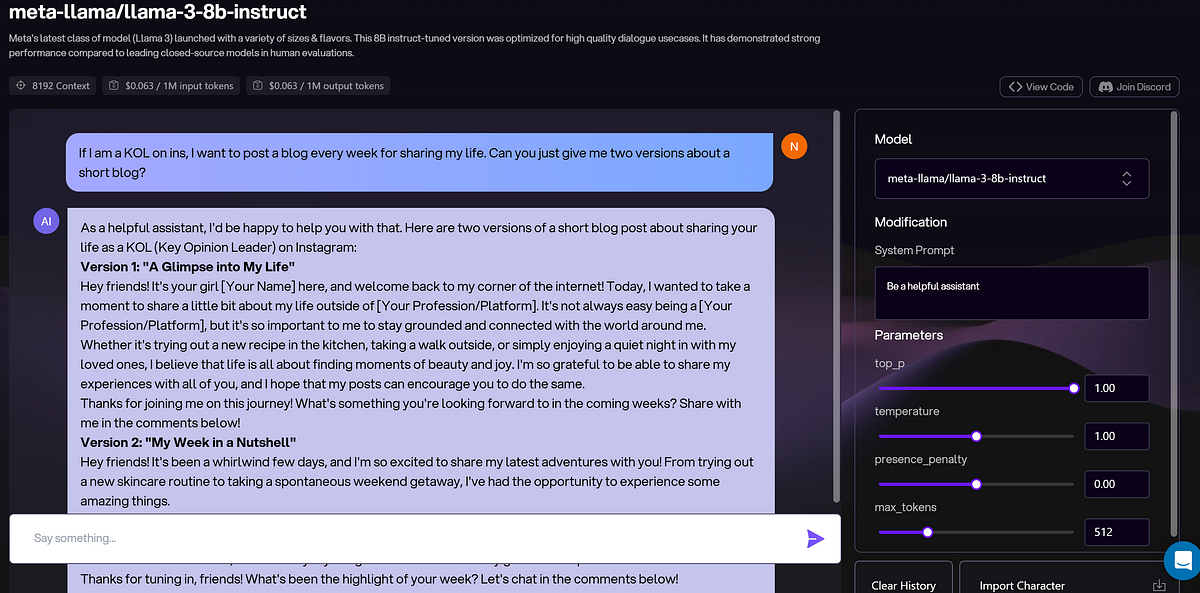
Enhancing Customer Support with Conversational AI
With the help of sophisticated chatbots and virtual assistants LLMs have transformed customer support. These AI helpers provide tailored assistance, escalate complex issues to human agents, and offer round-the-clock support. With human-like conversations, they excel in tasks like order processing, sharing product information, and issue resolution in industries like banking, healthcare, and online shopping. Leveraging LLMs enhances customer service by personalizing interactions and improving customer experience.
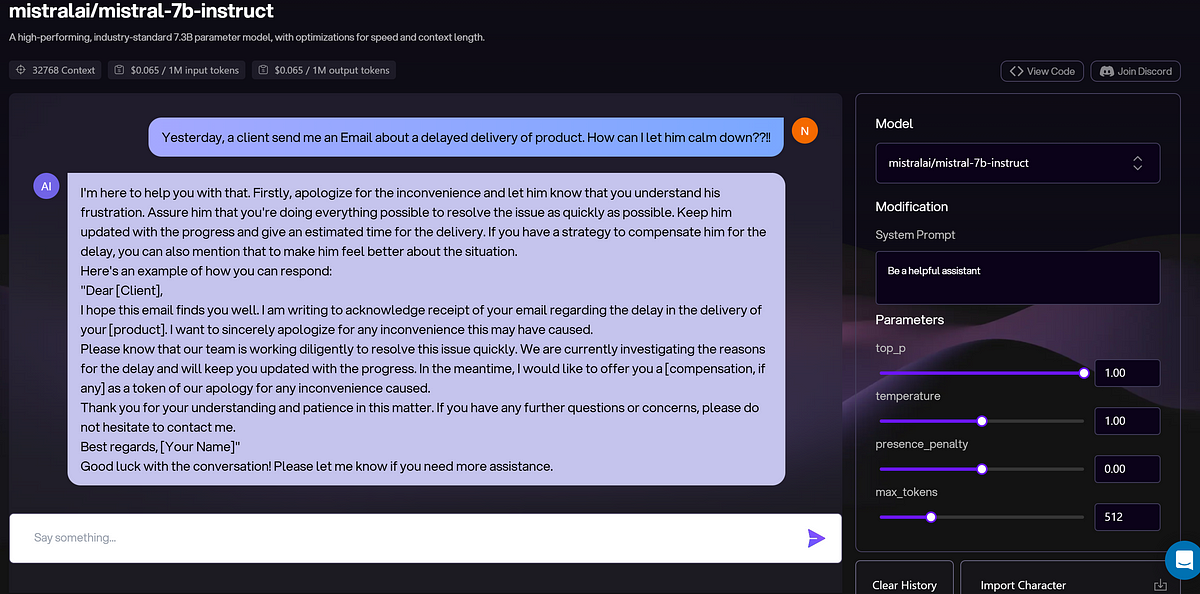
Breakthroughs in Language Translation and Multilingual Models
LLMs also take language translation by storm, preserving original meaning accurately across languages. They handle multiple languages effortlessly, ensuring natural and precise translations that maintain context and cultural nuances. LLMs are essential for tasks, like translating product descriptions or website content effectively, enhancing global connectivity and streamlining communication in diverse settings.

Sample Code

Comparing Technical Features Across Leading LLMs
When selecting a language model, reviewing tech specs is crucial to determine its capabilities and suitability for specific tasks. Details like speed, accuracy, architecture (transformers or other neural networks), and number of parameters provide insights into performance.
Analyzing Performance Benchmarks and Model Architectures
When evaluating big language models (LLMs), factors like model size, training data, and processing speed are crucial. Each LLM excels at specific tasks due to its unique features and level of detail. Evolving designs enable these models to better comprehend and generate text for different purposes. Benchmarks compare models in areas such as coding, reasoning, and response time, revealing strengths and weaknesses.
Key Innovations and Breakthroughs in Recent LLMs
- For things like posts on social media and writing about products, content generation gets better performance thanks to Mistral AI.
- The ability of Meta AI in image generation pushes boundaries further than ever before.
5 Top LLM Model Comparison
In the world of big language models, there are some key players like OpenAI’s GPT Series, Google’s BERT, Meta AI’s llama, and Mistral AI’s Mistral. Each one is good at doing certain things. GPT excels in text creation, BERT in language comprehension, DALL-E in image generation, llama in various fields, and Mistral in text generation.
Open AI: GPT-4
OpenAI’s GPT series has pushed generative AI boundaries with models like GPT-3.5 and the latest GPT-4. The new version the GPT-4, can handle text and images, making conversations more realistic. It grasps concepts across various industries like a human, offering coding assistance to developers.


Features
- Remarkable capabilities in natural language understanding and text completion; Excel at complex tasks
- Trained on internet data, codes, instructions, and human feedback, with over a hundred billion parameters
Google: BERT and T5
Google has introduced two key Large Language Models (LLMs): BERT and T5. Both BERT and T5 are revolutionizing how we work with language in Google Workspace products, enhancing speech understanding, sentiment analysis, and overall language processing capabilities.


Features
- BERT: Predicts one word for each mask like sentiment analysis and question-answering
- T5: Hybrid and flexible, capable of outputting either one word or multiple words for a single mask such as translation and summarization
- Both: Fine-tuned on specific downstream tasks
Meta AI: LLama
Meta AI’s Llama 3 model enhances chatbots’ conversational abilities and safety through real-time feedback, aiding AI developers in comparing large language models. The model is provided by DeepInfra, Novita AI and so on.


Features
- Enable users to create natural text from incomplete input
- Provide accurate responses to complex queries in various tasks
- Strong multimodal capabilities, processing and generating text alongside other sensory modalities
Anthropic: Claude
Claude, developed by Anthropic, is a family of AI chatbots and language models capable of natural conversations through text. Claude can summarize, edit, answer questions, and write code.


Features
- Perform advanced cognitive tasks
- Transcribe and analyze static images
- Create websites in HTML/CSS or debug code bases
Mistral AI: Mistral and Mixtral
Mistral AI’s Mistral excels at various uses, while Mixtral 8x7B and 8x22B models are transforming natural language processing. Novita Ai provide the models which concentrate on specialized neural network experts, providing tailored and coherent responses.
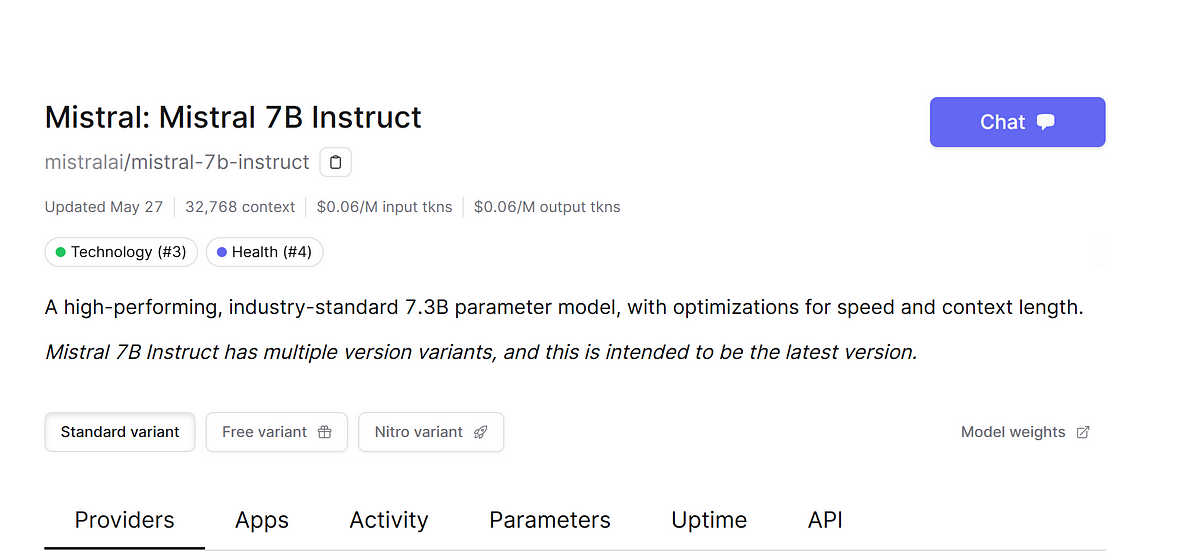

Features
- Mistral 7B: Compact, powerful for various applications
- Mixtral 8x7B: Fluent in different languages; Proficient in code; 32k context window
- Mixtral 8x22B: 64k context window; Native function calling capacities
Selecting the Right LLM for Your Needs
Choosing the right LLM for natural language processing (NLP) is crucial. With various models available, consider factors like performance, training data, model size, and compatibility with your project goals. By selecting a model that aligns with your specific needs, businesses and developers can leverage NLP technology effectively.
Criteria for Evaluating LLMs: Performance, Scalability, and Cost
When considering different models, focus on their performance, scalability, and cost-effectiveness. Evaluate how well they generate coherent text, handle large datasets efficiently, and weigh the costs involved. Choose an LLM that aligns with your needs and is a smart financial investment.
Case Studies: Success Stories and Lessons Learned
Studying case studies reveals how LLMs are applied in real-world scenarios, demonstrating their effectiveness and practical uses. Developers can learn from these examples to integrate LLMs successfully into their operations, leading to efficiency improvement, enhanced customer satisfaction, and innovation. Success stories showcase the transformative impact of LLMs across industries. These insights are invaluable for businesses looking to optimize their use of LLMs.
Experiencing Novita AI LLM
Novita AI is an AI API platform that provides various LLM models and services. You may focus your energy on application growth and customer service, while the LLM Infrastructure can be entrusted to the Novita Team.
Step-by-Step Guide to Using Novita AI LLM API
- Step 1: Create an account on Novita AI and sign in.
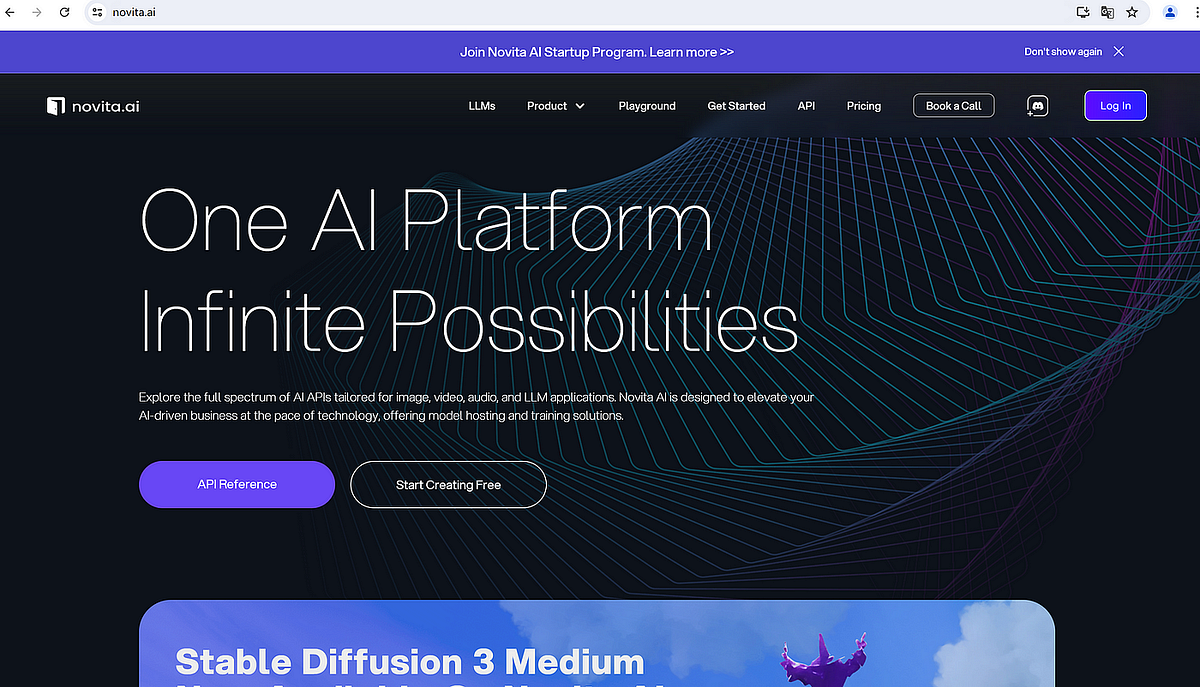
- Step 2: Navigate to the “APl” and find the “LLM API” under the “LLMs” tab.

- Step 3: Obtain and integrate the API key into your existing project backend to develop your LLM API.
- Step 4: Check the LLM API reference page to find the “APIs” and “Models” supported by Novita AI.

- Step 5: Click the models link under “the models we support are” and then you can see various models at the end of the page.

- Step 6: Choose the model that meets your demand. Set up your development environment and adjust parameters including content, role, name, and detailed prompt.

- Step 7: Test several times until the API can be used reliably.
Sample Chat Completions API

With the API key, you can train your LLM models to generate high-quality content tailored to your needs. Novita AI also offers a playground for testing models.
Try it on the playground.
- Step 1: Visit Novita AI and create an account.
- Step 2: After logging in, navigate to “Try Chat” under the “LLMs” tab.

- Step 3: Select the model from the list that you desired, like the llama and Mistral 7B Instruct models.

- Step 4: Set the parameters according to your needs like temperature, and max tokens.

- Step 5: Click the button on the right, then you can get content in a few seconds.

The Future Landscape of LLMs
LLMs can understand language better, and are becoming more creative too. Companies can stay informed about industry changes and maximize LLM capabilities by following expert predictions.
Emerging Trends and Predictions in LLM Development
In LLM development, new trends are reshaping the field. Models are faster, handle more data, and are smarter. They now focus on specific industries for better context-based answers. With transfer learning and multitasking, LLMs are improving over time, benefiting businesses using AI effectively.
The Role of LLMs in Advancing AI Towards General Intelligence
LLMs are important in advancing AI towards general intelligence by understanding and generating language effectively. They analyze vast amounts of text data to grasp the nuances of language, enabling them to produce contextually appropriate words like humans. As LLMs improve in accuracy and capacity, they contribute to creating AI systems that mimic human conversation better than ever before.
Conclusion
In a constantly evolving digital landscape, understanding the intricacies of LLMs is crucial for leveraging their potential. From the GPT series to Meta AI and beyond, each model offers unique advantages in transforming content creation, customer support, and language translation. By evaluating performance, scalability, and cost factors, businesses can select the right LLM to drive innovation and stay competitive. As we look ahead, the future promises exciting trends and advancements, propelling AI towards broader intelligence horizons. Stay informed with the latest LLM research to harness their full capabilities and shape a brighter AI-powered future.
Frequently Asked Questions
What Differentiates LLMs from Other AI Models?
LLMs provide context and memory features, and generative AI creates engaging responses. LLMs constitute a specific category of generative AI models with a specialized focus on text-based data.
How Can Businesses Leverage LLMs for Competitive Advantage?
LLMs can be leveraged to develop powerful internal tools like semantic and contextual document searches.
What Is the Difference between LLM and Traditional Chatbot
LLMs can dynamically generate relevant and contextual responses based on the user’s input and the bot’s vast training data. But Traditional chatbots often provide rigid, scripted responses.
What Are the Common Challenges in Implementing LLMs?
Setting up LLMs requires knowledge of machine learning, deep learning, and NLP. Running these models also needs to overcome: quota and rate Limit restriction.
How to Stay Updated with the Latest LLM Research and Developments?
Stay informed by following groups and organizations dedicated to LLMs. Explore websites like Novita AI offering comprehensive resources on LLMs, including guides and code examples for staying up-to-date.
Novita AI, the one-stop platform for limitless creativity that gives you access to 100+ APIs. From image generation and language processing to audio enhancement and video manipulation, cheap pay-as-you-go, it frees you from GPU maintenance hassles while building your own products. Try it for free.
Recommended Reading